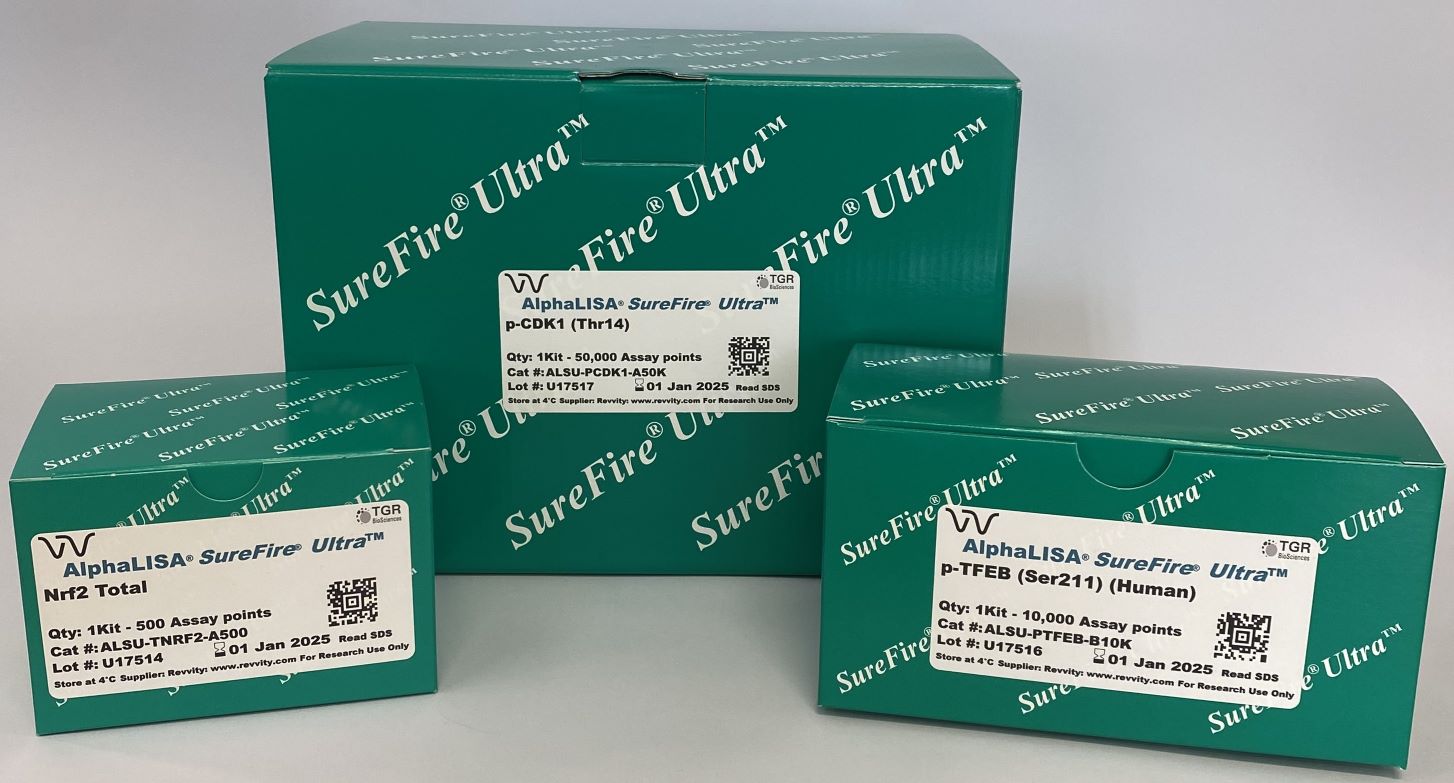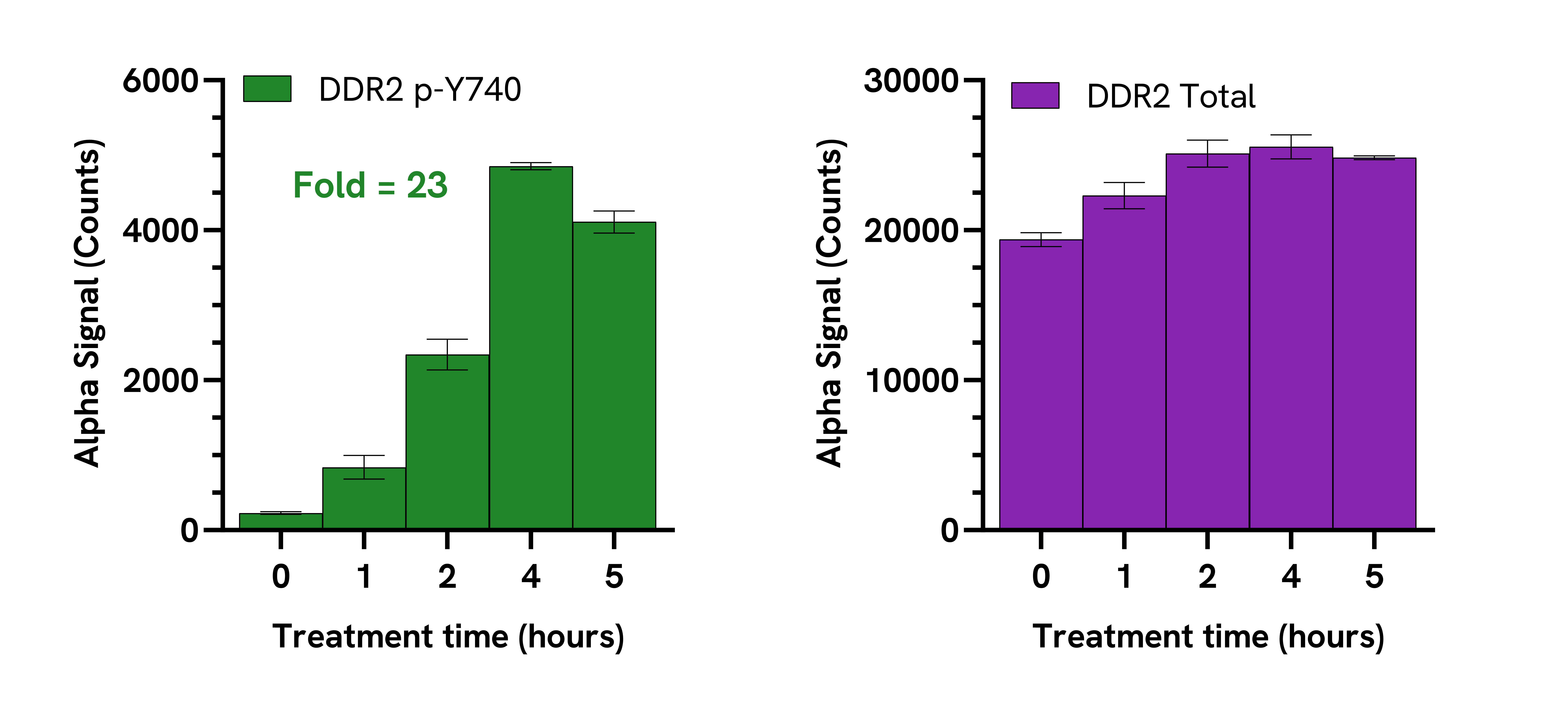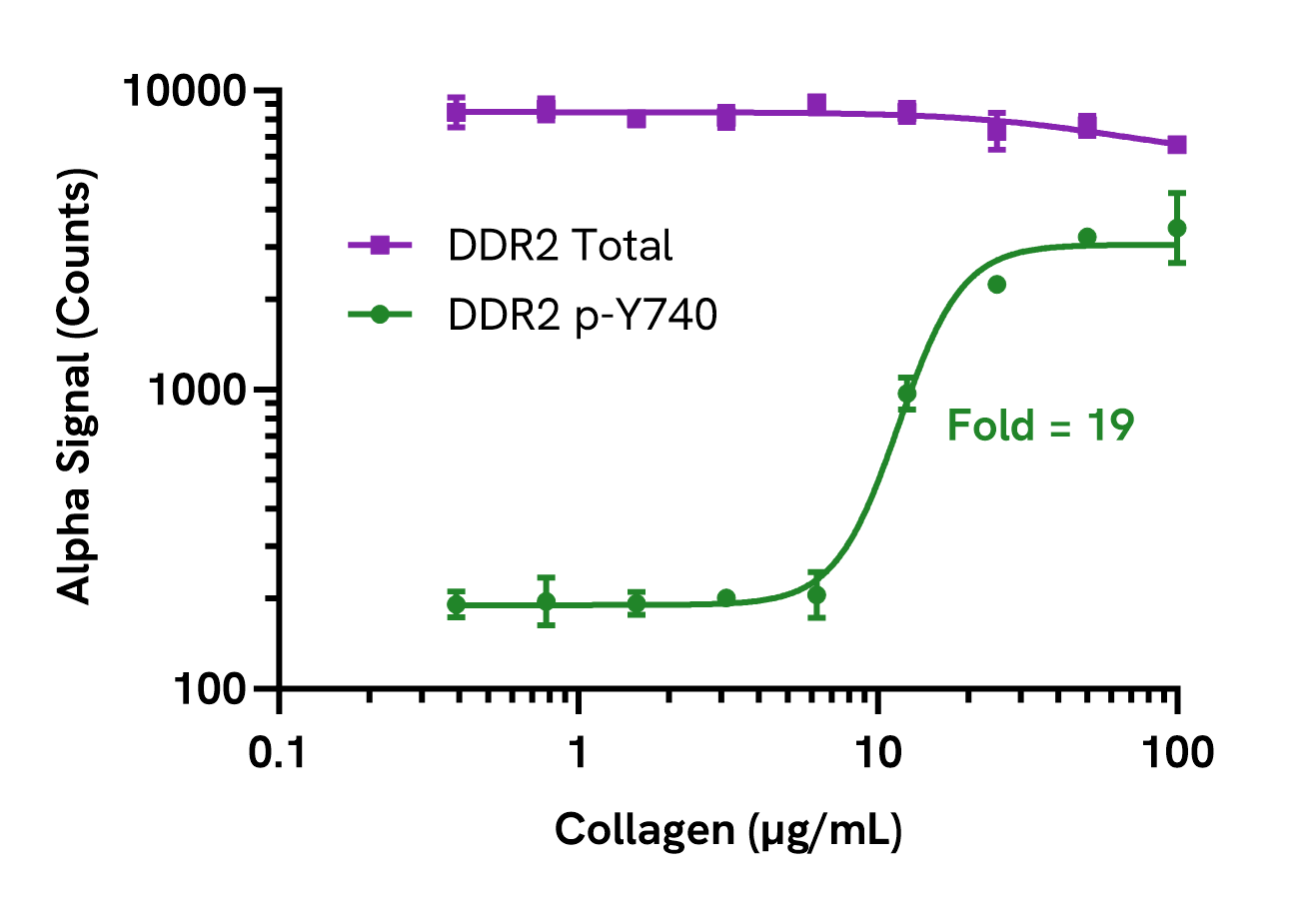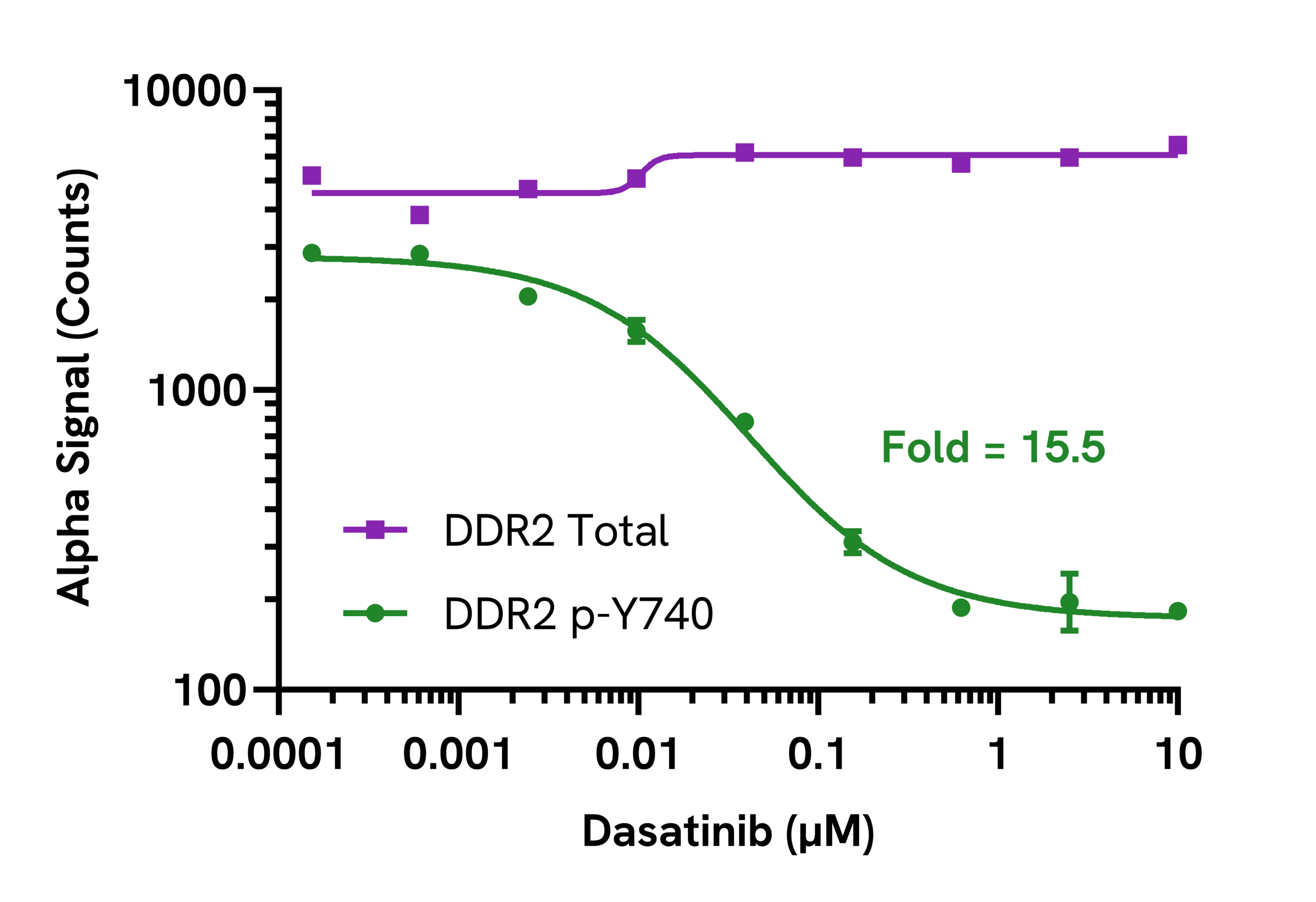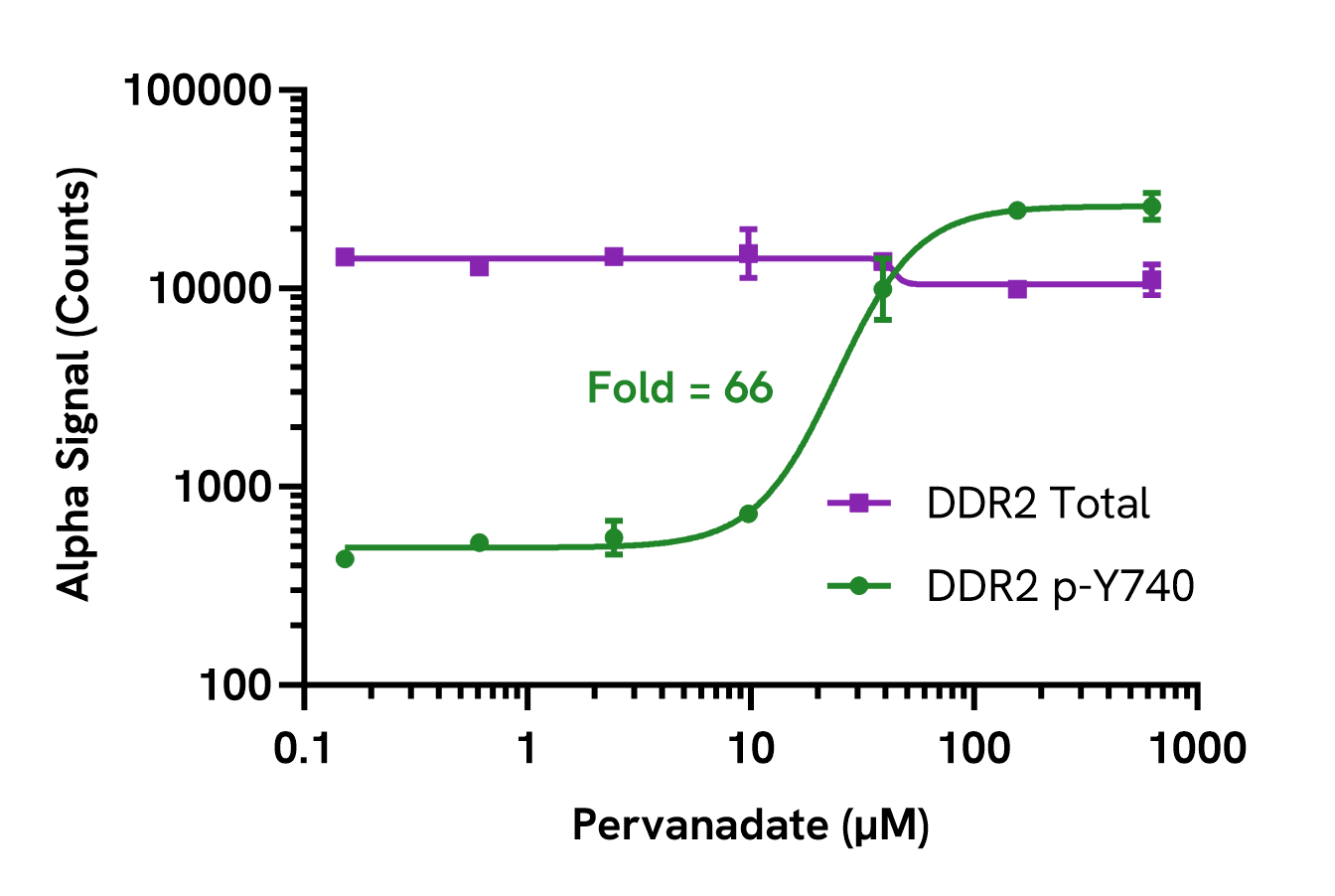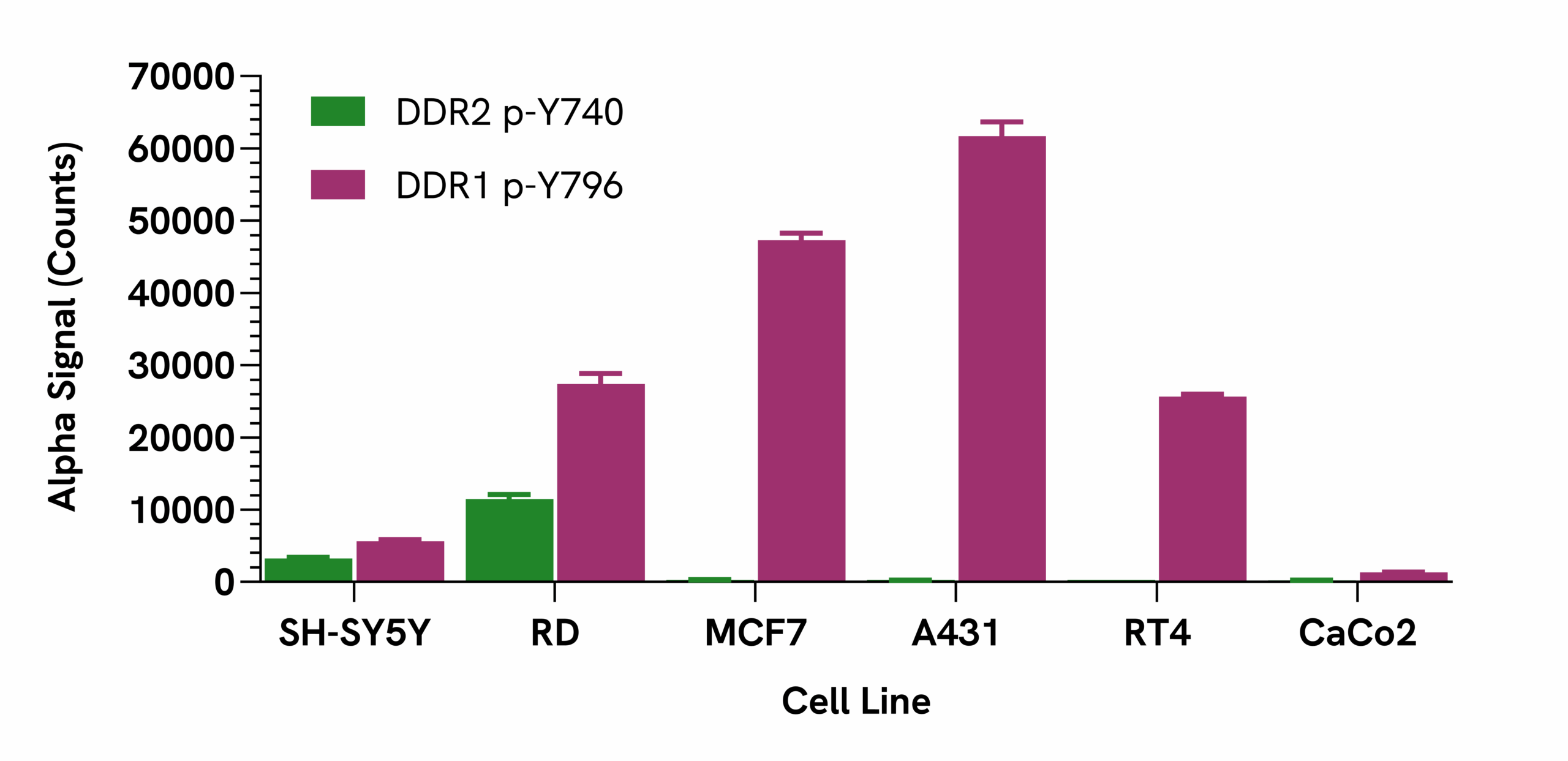Assay points.
-
ALSU-PDDR2-A500
500
-
ALSU-PDDR2-A10K
10,000
-
ALSU-PDDR2-A50K
50,000
-
ALSU-PDDR2-A-HV
100
Assay Principle
The AlphaLISA™ SureFire® Ultra™ assay enables the rapid and sensitive detection of total and phosphorylated cellular proteins. AlphaLISA™ assays utilize two bead types: Acceptor Beads and Donor Beads. The Acceptor Bead is coated with a proprietary CaptSure™ agent to specifically immobilize the assay specific antibody which is labeled with a CaptSure™ tag. The Donor Bead is coated with streptavidin to capture the biotinylated antibody.
In the presence of a target protein, the two target-specific antibodies bring Donor and Acceptor Beads into close proximity. When the Donor Beads are activated by a laser (680 nm), singlet oxygen is transferred to the Acceptor Bead leading to the production of an Alpha signal. The amount of light emission (615 nm) from the Acceptor Bead is directly proportional to the amount of target protein present in the sample. If an Acceptor Bead is not in close proximity (i.e. 200 nm) of a Donor bead, little to no signal is produced over background.
The assay can be executed in a 1-plate or 2-plate assay protocol (Refer to Manual for more details).
1-plate assay protocol: culturing of cells, treatment, lysis and assay are performed in a single well, enabling miniaturization in high throughput screening programs.
2-plate assay protocol: cells are cultured and treated in a 96-well culture plate and lysates are then transferred into a separate plate for assay. This format allows the evaluation of multiple targets from a single lysate.
Technical Specific Data
Data obtained with a 2-plate, 2-incubation protocol. HT-1080 cells were seeded at 60K cells/well in a 96 well plate and incubated overnight. Cells were treated with 100 μg/mL Collagen I (derived from rat tail) at the indicated time points. Cells were lysed with Lysis Buffer B and assayed separately for Phospho (Tyr740) and Total DDR2 using respective SureFire® Ultra™ kits. Equivalent to approximately 12,000 cells/datapoint.
Data obtained with a 2-plate, 2-incubation protocol. HT-1080 cells were seeded at 60K cells/well in a 96 well plate and incubated overnight. Cells were treated with Collagen I at the indicated concentrations for 4 hours. Cells were lysed with Lysis Buffer B and assayed separately for Phospho (Tyr740) and Total DDR2 using respective SureFire® Ultra™ kits. Equivalent to approximately 12,000 cells/datapoint.
Data obtained with a 2-plate, 2-incubation protocol. HT-1080 cells were seeded at 50K cells/well in a 96 well plate and incubated overnight. Cells were treated with Dasatinib at the indicated concentrations for 2 hours, all media was removed and then followed by a treatment with Collagen I at 100 μg/mL for 4 hours. Cells were lysed with Lysis Buffer B and assayed separately for Phospho (Tyr740) and Total DDR2 using respective SureFire® Ultra™ kits. Equivalent to approximately 10,000 cells/datapoint.
Data obtained with a 2-plate, 2-incubation protocol. RD cells were seeded at 50K cells/well in a 96 well plate and incubated overnight. Cells were treated with Pervanadate at the indicated concentrations for 15 minutes. Cells were lysed with Lysis Buffer B and assayed separately for Phospho (Tyr740) and Total DDR2 using respective SureFire® Ultra™ kits. Equivalent to approximately 10,000 cells/datapoint.
Data obtained with a 2-plate, 2-incubation protocol. C2C12 cells were seeded at 50K cells/well in a 96 well plate and incubated overnight. Cells were treated with Pervanadate at the indicated concentrations for 15 minutes. Cells were lysed with Lysis Buffer B and assayed separately for Phospho (Tyr740) and Total DDR2 using respective SureFire® Ultra™ kits. Equivalent to approximately 10,000 cells/datapoint.
Various cell lines treated with pervanadate were evaluated for DDR2 (Tyr740) and DDR1 (Tyr796) using respective SureFire® Ultra™ kits. A significant difference in expression profiles was observed between DDR2 and DDR1. As expected, DDR2 was only detected in RD and SH-SY5Y cells while DDR1 expression was observed across various cell lines.
Manuals & downloads.
-
PDF
-
PDF
Detection Kit Manual
-
Tech Spec
Technical Data Sheet
Safety Data Sheets
-
Safety Data Sheet (SDS)
Safety Data Sheet EU-EN
-
Safety Data Sheet (SDS)
Safety Data Sheet US
